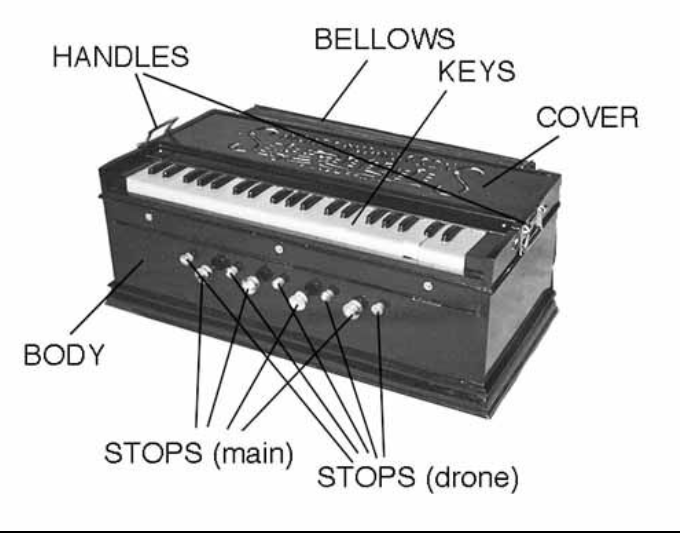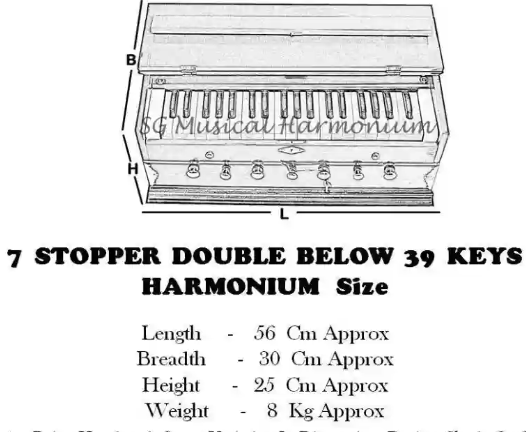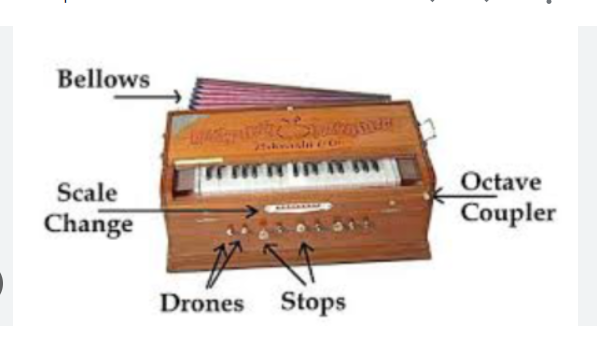Parts of a Harmonium: The harmonium, a key instrument in many musical traditions, particularly in South Asian classical and devotional music, is admired for its rich, resonant sound. Despite its straightforward appearance, the harmonium comprises several intricate parts working together to produce its signature melodies. This article provides an overview of the essential parts of a harmonium, exploring how each component contributes to the instrument’s functionality and sound.
Bellows
The bellows are the heart of the harmonium, responsible for generating the air necessary to produce sound. Typically located at the back or side of the instrument, the bellows consist of multiple layers of fabric or leather that are manually operated by the player. By pressing and releasing the bellows, air is pumped into the instrument, which then flows through the reeds. The quality and efficiency of the bellows directly impact the harmonium’s tonal consistency and the ease with which it can be played.
Reeds
Reeds are small, thin strips of metal, often brass, that vibrate when air passes over them, producing the harmonium’s sound. Each reed is tuned to a specific note, and a typical harmonium may have multiple sets of reeds to produce different tonal ranges, such as bass, male, and female voices. The combination of these reeds allows the player to create a rich, layered sound. Proper care and tuning of the reeds are essential for maintaining the harmonium’s sound quality.
Keys of A Harmonium

The keys, similar to those on a piano, are the primary interface through which the player controls the harmonium. Pressing a key opens a valve that allows air to flow over the corresponding reed, producing a specific note. Harmonium keys are usually made of wood, covered with plastic or other materials for durability and smoothness. The layout of the keys typically follows the chromatic scale, making it accessible for various musical styles.
Stops and Couplers
Stops are knobs or levers that control which set of reeds is activated, allowing the player to adjust the tone and volume. By pulling or pushing the stops, the player can engage different reed banks, offering a variety of sound textures. Couplers, on the other hand, are mechanisms that link keys to play the same note in different octaves simultaneously. This feature is particularly useful for creating fuller, more resonant sounds during performances.
Sound Board (Parts of a Harmonium)
The soundboard is a crucial component located inside the harmonium that amplifies the sound produced by the reeds. It is typically made of thin wood, which vibrates in response to the reeds, enhancing the overall volume and resonance. The type of wood used for the soundboard can significantly influence the tonal quality of the instrument, with higher-quality wood generally providing a richer, more vibrant sound.
Air Chamber (Parts of a Harmonium)
Also known as the wind chest, the air chamber is where the air from the bellows is stored before being directed to the reeds. It acts as a buffer, ensuring a steady and consistent flow of air to the reeds even when the bellows are not being pumped continuously. The design and construction of the air chamber play a vital role in maintaining the smoothness and continuity of the sound, especially during sustained notes or fast playing.
Cover (Parts of a Harmonium)
The cover of the harmonium, also referred to as the top or lid, protects the internal components from dust, moisture, and damage. It is typically made of wood and can feature decorative elements that add to the instrument’s aesthetic appeal. The cover is usually hinged, allowing easy access to the internal parts for tuning, maintenance, or repair.

Conclusion
Parts of a Harmonium
Understanding the different parts of a harmonium is essential for both musicians and enthusiasts. Each component plays a specific role in the overall performance and sound of the instrument. Whether you are a seasoned player or a beginner, appreciating the craftsmanship and complexity of the harmonium can enhance your musical experience. Proper care and maintenance of these parts will ensure that your harmonium continues to produce its beautiful, resonant sound for years to come.

